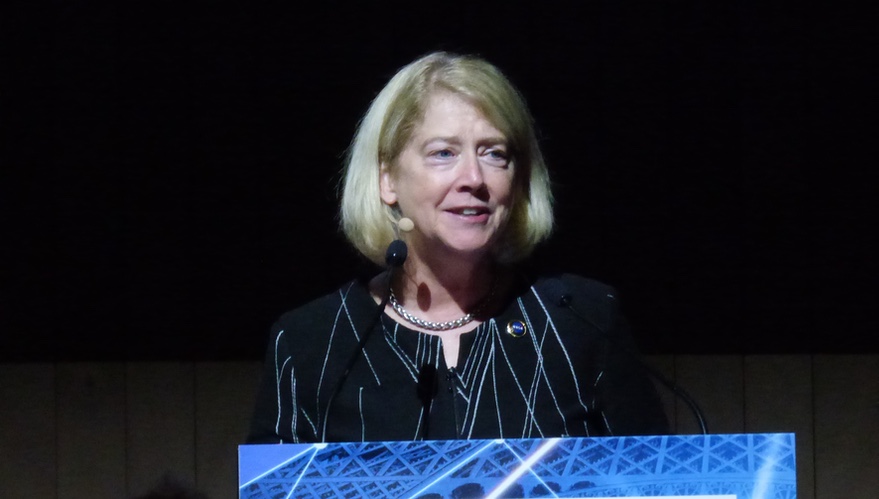PARIS — NASA has revised and expanded a set of objectives it will use to guide its architecture for lunar and Mars exploration after receiving volumes of feedback from commercial and international partners.
The agency released the revised list of 63 objectives to coincide with a presentation by the agency’s deputy administrator, Pam Melroy, at the International Astronautical Congress here Sept. 20. The document is an updated version of 50 objectives for transportation and habitation, lunar and Martian infrastructure, operations and science that the agency released in May for public comment.
“Our overarching goal is to create a blueprint for sustained human presence and exploration throughout the solar system,” Melroy said in her speech.
The original draft of 50 objectives generated more than 5,000 comments from industry, international partners and the general public. The agency then invited some of those who submitted comments to two workshops, in Houston and in London, for additional discussion.
One change is that the science objectives were “completely restructured,” she said. The original objectives focused only on lunar science with no Mars-specific goals other than carrying out the Mars Sample Return campaign. “That’s kind of important. We do have to know what we need to learn at Mars before we send humans.”
NASA also rewrote the objectives to make them more consistent in the level of detail, and added categories such as “science-enabling” objectives that develop techniques to support science as well as applied science. The result was 26 science objectives, compared to 20 in the original one, most of which apply to both the moon and Mars.
The revised document now includes a set of nine “recurring tenets,” or common themes across all objectives. An example of that is explicitly mentioning responsible use of space and defining what that means.
“We just considered it was consistent with our responsibility obligations and it was something that was just assumed, but it wasn’t explicitly stated,” she said. Other recurring tenets included in the document range from international and industry collaboration to interoperability and reuse.
The objectives are part of a broader approach by NASA to develop an architecture for human and robotic exploration and use that to guide programs. “We have a founding principle to architect from the right and execute from the left,” she said, meaning developing an architecture to meet a desired goal and use that to guide work on existing programs.
Melroy said NASA planned a “regular cadence” of workshops to provide new input into that architecture and set of objectives. “We’re going to be revisiting the architecture on an annual basis,” she said. “Our watch words are refinement, analysis review and engagement, and that’s a cycle we intend to repeat.”
The revised objectives won an endorsement from one organization, the American Astronautical Society (AAS). “It is especially important that NASA has put science up front and prioritized international cooperation, goals AAS has championed goals since its founding,” Alan DeLuna, president of AAS, said in a statement.
